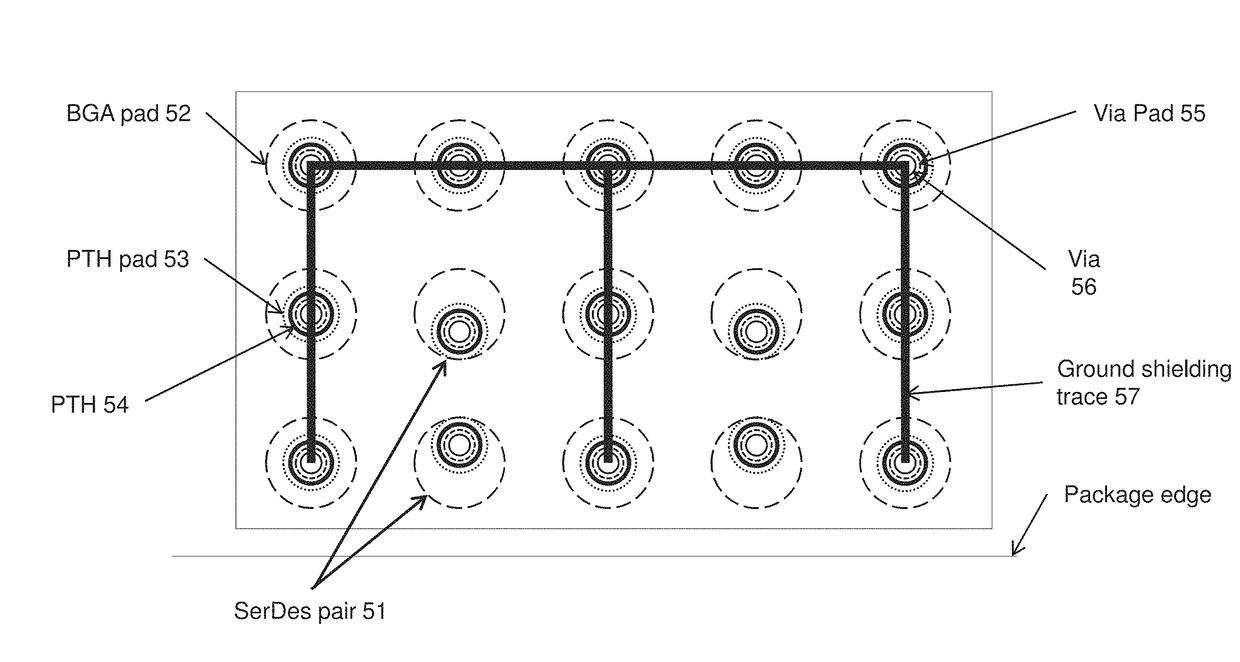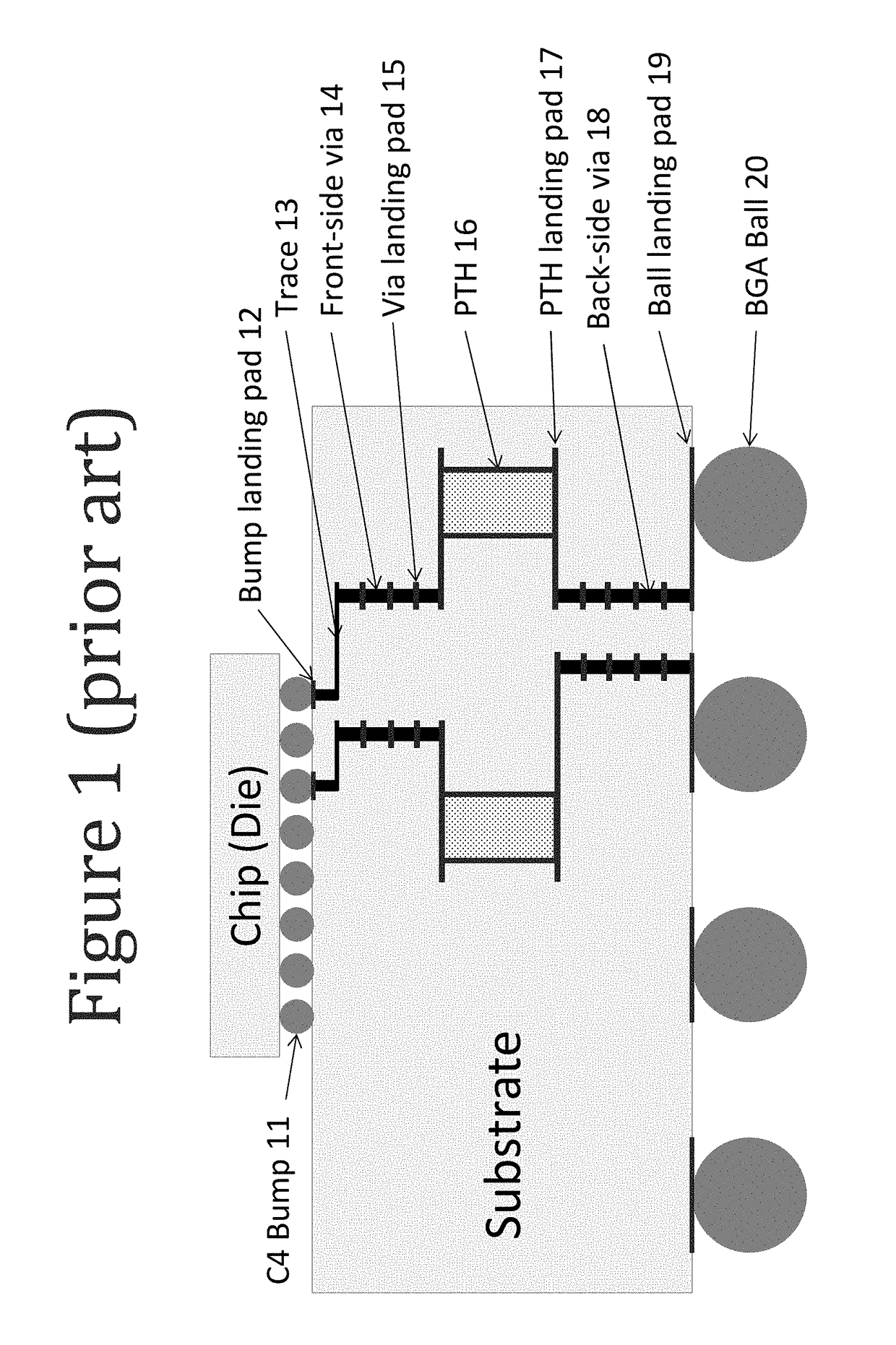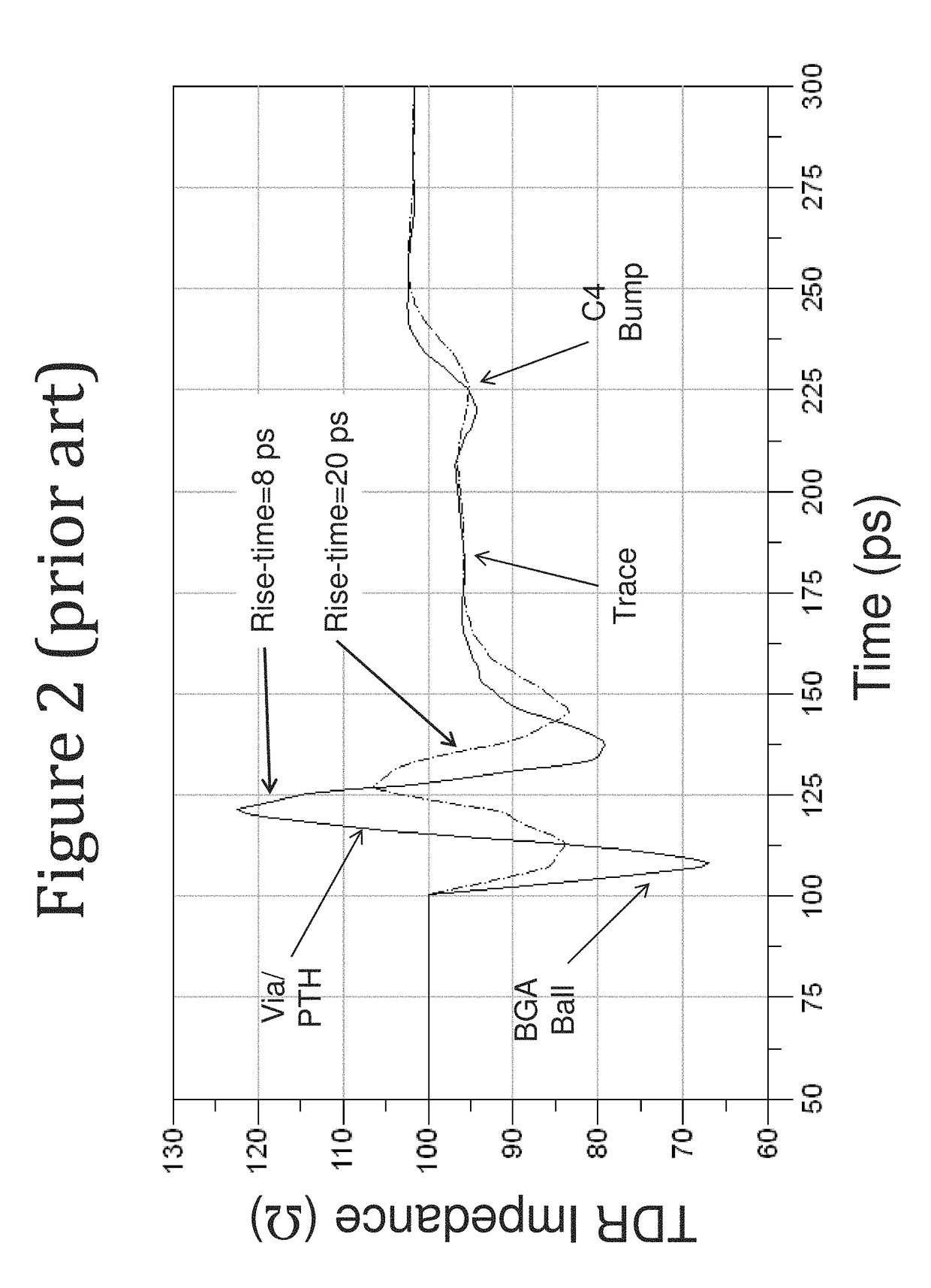Package substrate differential impedance optimization for 25 to 60 gbps and beyond
a technology of differential impedance optimization and substrate, applied in multi-objective optimisation, cad techniques, instruments, etc., can solve the problems of reduced signal quality, increased differential return loss, reduced eye height and eye width
- Summary
- Abstract
- Description
- Claims
- Application Information
AI Technical Summary
Benefits of technology
Problems solved by technology
Method used
Image
Examples
first embodiment
[0075]FIG. 4b shows the design of the BGA ball and the bottom metal layer of the first embodiment of this invention. FIG. 4a shows the BGA ball and the bottom metal layer of a conventional 10 Gb / s design. In FIGS. 4a and 4b, the letter “G” indicates ground balls under the anti-pad. As shown in FIG. 4a, in the conventional design a SerDes differential pair is surrounded with fully populated ground BGA balls. The metal ground plane 41 covers all the SerDes areas and has all the ground BGA balls connected except in the antipad region 42. It relies on enlarging the antipad 42 size to optimize impedance by reducing the parasitic capacitance between the BGA ball and the ground plane. The shielding is not in the signal vertical propagation direction and their contribution to crosstalk reduction between adjacent SerDes signals is minimal. On the other hand, it dramatically reduces the impedance because of the large capacitive coupling between it and the SerDes signals.
[0076]The first embodi...
second embodiment
[0086]FIGS. 10a-10d illustrate the SerDes differential pair design according to a second embodiment of the present invention. To make the drawing easy to view, only the SerDes pair is shown; all its surrounding BGA landing pads, vias, PTHs, voids, and shielding are removed. FIG. 10a is a top view. FIG. 10b is a perspective view. FIG. 10c is a side view in a direction from the lower side of FIG. 10a and FIG. 10d is a side view in a direction from the right side of FIG. 10a.
[0087]As shown in FIG. 10a, a key difference between this design of the second embodiment and the design of the first embodiment is the “90 degree rotation” of the vertical plane that passes through the PTH 101 pair (and all the vias 102 above them on the upper side of the PTH) relative to the vertical plane that passes through the corresponding BGA ball pads 103. Also, the PTH 101 pair and the vias 102 above them are located at the center plane between the two BGA ball pads 103 and are kept equal distance to each...
third embodiment
[0116]The third embodiment is a novel design in BGA ball assignment, via and PTH placement, metal void and shielding balance, and trace width adjustment near the transition location are provided. Different from the first and second embodiments which used stripline structure for horizontal interconnection, the third embodiment uses microstrip line structure routed on top and bottom metal layers for horizontal interconnection. The advantage of microstrip line over stripline is that package substrate layout count can be reduced and the packaging cost can be lowered. It should be noted that the design of the third embodiment uses standard package substrate design rules and can be manufactured in high volume without the increase in cost, and can pass rigorous quality and reliability tests.
[0117]Compared to the relatively expensive ceramic package, today, the HFCBGA (Heat spreader Flip-Chip Ball-Grid-Array) package with organic substrate is still the preferred package type for 25 Gb / s Ser...
PUM
 Login to View More
Login to View More Abstract
Description
Claims
Application Information
 Login to View More
Login to View More - R&D
- Intellectual Property
- Life Sciences
- Materials
- Tech Scout
- Unparalleled Data Quality
- Higher Quality Content
- 60% Fewer Hallucinations
Browse by: Latest US Patents, China's latest patents, Technical Efficacy Thesaurus, Application Domain, Technology Topic, Popular Technical Reports.
© 2025 PatSnap. All rights reserved.Legal|Privacy policy|Modern Slavery Act Transparency Statement|Sitemap|About US| Contact US: help@patsnap.com



